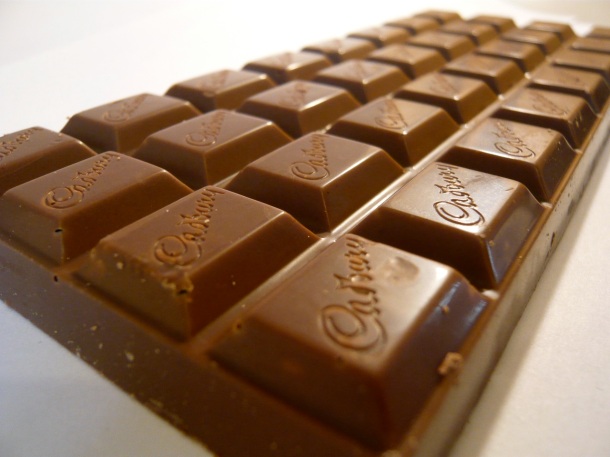That Christmas chocolate you’re gorging on didn’t come from Oompa-Loompas operating magical machines inside Willy Wonka’s Chocolate Factory…
Instead, companies like Nestle and Cadbury produce their chocolate from cocoa beans sourced from plantations in countries such as Côte d’Ivoire, Ghana, Indonesia or the Dominican Republic.
The Dominican Republic is an appropriate place to visit a cocoa plantation as historians believe that chocolate consumption originated in the Pre-Columbian societies of Central America and the Caribbean at least five thousand years ago.
Accordingly, I shall profile below one such cocoa plantation in the Dominican Republic for you… This particular plantation is located on the slopes of Loma Quita Espuela, northeast of the town of San Francisco de Macoris.
Today, many of the small, local cocoa farmers whose land borders the reserve covering Loma Quita Espuela produce organic cocoa. And, if you’re in to this sort of thing, the Dominican Republic has taken a global lead when it comes to chocolate produced in an “ethical” manner. First, the government ensures cocoa production in the Dominican Republic is done in an environmentally sustainable manner. Secondly, until 2009, the Dominican Republic led the world in “Fairtrade-certified” cocoa production, and it still remains a leader in this front.
Before, I dive into the plantation, I should mention that Loma Quita Espuela itself is well worth a visit…
…as a hike to the top – at 942 meters – provides outstanding views of the countryside where our featured plantation is located:
The cocoa trees for our plantation are found in the jungle at the base of the mountain you see in the pictures above:
These seed pods, which grow on the trunk of the tree and not its branches, are where the cocoa beans are located:
The harvested seed pods are taken to the plantation headquarters…
…where the seed pods are cracked open — typically with a machete — to expose the beans… A typical pod contains 20 to 50 beans and about 400 dried beans are required to make one pound of chocolate:
The beans are then removed and left to dry or “sweat” for several days. During this time, all of the pulp surrounding the beans trickles off which prevents the beans from developing mildew. The drying process involves the beans being spread out on a large surface with exposure to the sun or another heat source (although the sun is the preferred method) and almost constantly raked:
The dried beans are then packaged up…
…and weighed to make sure the bags have a uniform weight:
The target weight is 50 pounds per sack of dried cocoa beans. For each 50 pound sack, the farmers (at the time we visited) receive 6,000 Dominican pesos (approximately $133 US dollars).
The organization that represents the cocoa plantations in the area then sells the 50 pound sacks for 6,300 pesos (approximately $139 US dollars). The small profit the organization collects is to cover organic certification, processing, etc.
It takes about 10 trees to produce one 50 pound sack per year. To put it another way, each mature tree produces 6-700 Dominican pesos (approximately $16 US dollars) worth of cocoa beans per year.
So, you can play along at home as a chocolate baron and do the math to determine the potential future value of these cocoa tree seedlings waiting to be planted on the grounds of the plantation:
And chocolate is a big business… Regardless of how one views chocolate or the production of cocoa, it is a significant industry – the global chocolate market is estimated to exceed $100 billion by 2016.
*****
Once the cocoa beans have been transported to a port and loaded onto a ship – most ships carrying the precious beans travel to the Netherlands, the United States or the United Kingdom – the beans finally arrive at a factory. Here, they are roasted and then ground down to a thick, creamy paste known as “chocolate liquor” which is similar to peanut butter. This “liquor” is then refined into the chocolate we know so well by mixing in cocoa butter and sugar and sometimes vanilla and other ingredients depending on what a manufacturer is going for.
It’s quite a journey. So, next time you are gobbling down some chocolate, take a second to contemplate just how far that chocolate came to get to your mouth.














You always tell me something I don’t know. Went to La Republica Dominicana about 34 years ago, when Boca Chita was without hotels filled with its people. I rented a house, a maid, a motorbike & went around for almost a month.
You are giving me the taste to return. I never went back cuz it simply got so touristic.
Thank you!!
From iPhone 6 Plus S 🌐
Glad to hear I still have the power to entertain and inform… 34 years ago would have been a great time to visit, but it is still possible to avoid the tourist areas by going to the north.
No, there are many places “away from it all”. We live in Luperon, a small town on the north coast. Still has the little colmados and people gather in the park at night, listen to their music, drink rum and beer.
Very interesting article Justin. Looks like a beautiful place.
Happy holidays to you and Eleanora. Give your mom a hug for me.
Susan
My family has a cocoa plantation in the eastern portion of the Dominican Republic
Ignacio, tu apellido es insigne en RD. Eres de la familia del prócer? saludos. Pablo.
I really appreciate you adding the math of it all. I haven’t heard that before, and it gives an interesting perspective.